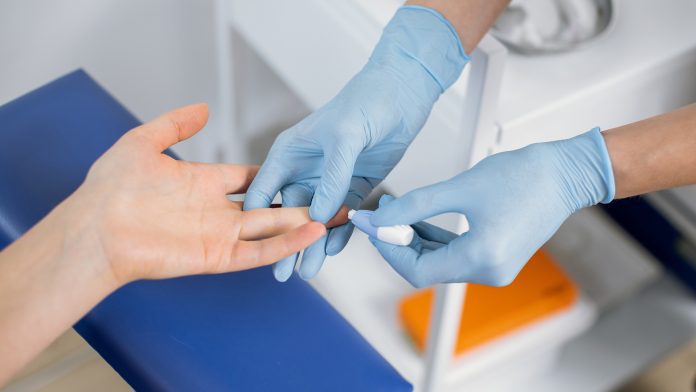
Scientists have reported the invention of a tiny sensor that can detect lithium levels from sweat on the surface of a fingertip.
Lithium is used to treat symptoms of bipolar and depression. Lithium must be taken in the right amount as too little will be ineffective, while too much can cause dangerous side effects. Therefore, a patient’s lithium levels must be closely monitored. Currently, invasive blood tests are used to monitor lithium levels and can require regular trips to a clinic. With the new sensor, lithium levels can be tested in just 30 seconds from any location.
Why lithium levels need to be measured
As well as the importance of maintaining the correct lithium levels, patients often struggle to take the medication as prescribed and may miss pills. When the medication does not appear to be working, health care providers must know exactly how much lithium the patient is consuming. Current methods of monitoring lithium levels are flawed, blood draws are accurate but are uncomfortable and time-consuming, while pill counters are unable to directly measure the intake of the medication.
The researchers found that lithium levels could be measured through a patient’s sweat. “Although it may not be visible, the human body constantly produces sweat, often only in very small amounts,” said Shuyu Lin, PhD, a postgraduate researcher on the project. “Small molecules derived from medication, including lithium, show up in that sweat. We recognised this as an opportunity to develop a new type of sensor that would detect these molecules,” She explained.
How does the sensor work?
The sensor will be able to analyse the sweat on a molecular level with a single touch. However, creating the sensor provided the team with some technical challenges. Generally, sweat is only present in minute amounts, and the electrochemical sensor needed to detect the lithium requires a watery environment. The team engineered and water-based gel containing glycerol to create a controlled environment for the electronic portion of the sensor. Lithium ions can then be trapped in the gel and detected by an ion-selective electrode. The accumulated ions then generate a difference in electrical potential, which can be compared to a reference electrode.
All this is measured by a tiny rectangular sensor, smaller than the head of a thumbtack. The sensor is still in the preliminary testing phase, but the researchers plan on incorporating it into a larger system, capable of providing the patient with visual feedback.
This technology could also be applied beyond lithium. Sam Emaminejad, the project’s principal investigator, is developing a similar touch-based sensor to monitor alcohol and acetaminophen levels, whilst exploring the possibility of detecting other substances.
The final sensor could include additional features, such as encryption, secured by a fingerprint and a robotic dispensing system that releases medication if the patient has a low level in their bloodstream.
The team will present their findings at the meeting of the American Chemical Society (ACS) which is held between August 21-25 2022.









